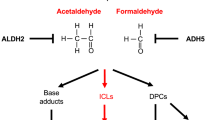Abstract.
Nucleotide excision repair (NER) is one of the most versatile DNA repair systems. It can be subdivided into several, differentially regulated, subpathways: global genome repair (GGR), transcription-coupled repair (TCR), and transcription domain-associated repair (DAR). This review begins with a brief overview of the numerous types of DNA lesions handled by NER, and proceeds to describe in detail the molecular mechanisms of NER. It then addresses heterogeneities in NER activity in physiological situations (e. g. in differentiated cells) and explores the underlying regulatory mechanism. It then reviews several inherited diseases associated with NER deficiencies: xeroderma pigmentosum, Cockayne syndrome, trichothiodystrophy, UV-sensitive syndrome. It concludes by discussing several currently unresolved issues, relating either to the cause of the above diseases or to the mechanistic details of the various NER subpathways and of their regulation. (Part of a Multi-author Review)
Similar content being viewed by others
Author information
Authors and Affiliations
Corresponding author
Rights and permissions
About this article
Cite this article
Nouspikel, T. DNA Repair in Mammalian Cells. Cell. Mol. Life Sci. 66, 994–1009 (2009). https://doi.org/10.1007/s00018-009-8737-y
Published:
Issue Date:
DOI: https://doi.org/10.1007/s00018-009-8737-y




